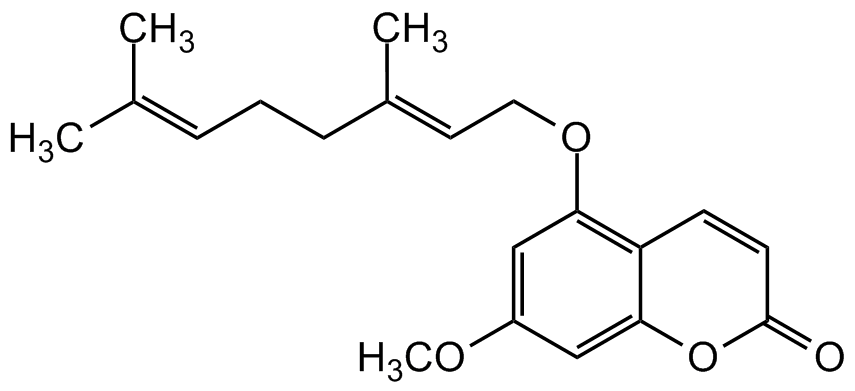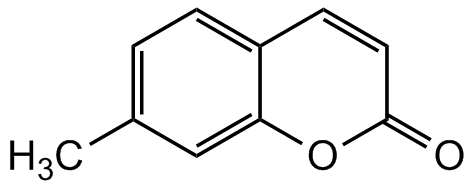
Chemical Structure
Osthole
CDX-O0097
CAS Number484-12-8
Product group Chemicals
Estimated Purity>95%
Molecular Weight244.29
Overview
- SupplierChemodex
- Product NameOsthole
- Delivery Days Customer10
- CAS Number484-12-8
- CertificationResearch Use Only
- Estimated Purity>95%
- Molecular FormulaC15H16O3
- Molecular Weight244.29
- Scientific DescriptionChemical. CAS: 484-12-8. Formula: C15H16O3. MW: 244.29. Synthetic. Osthole is a natural coumarin that was first isolated from several medicinal plants, including C. monnieri and A. pubescens. Osthole exhibits immunomodulatory, antioxidative, and anti-inflammatory properties, by regulating the expression of TNF-alpha, NF-kappaB, TGF-beta, cyclooxygenases, leukotrienes, nitric oxide, ERK and JNK. Shows also anti-cancer, chemopherapeutic, analgesic, neuroprotective, antipruritic, anti-leishmania and anti-lipedemic activities. It is reported to induce a nonspecific elevation of cAMP and cGMP levels through its ability to inhibit phosphodiesterases, which leads to a modulation of calcium channel signaling and vasorelaxant effects. Selectively inhibits TRPV3 channels in skin. Induces apoptosis and cell cycle arrest in cancer cells. Suppression of fatty acid synthase expression in HER2-overexpressing breast cancer cells indicates osthole as a promising agent for chemotherapy. - Osthole is a natural coumarin that was first isolated from several medicinal plants, including C. monnieri and A. pubescens. Osthole exhibits immunomodulatory, antioxidative, and anti-inflammatory properties, by regulating the expression of TNF-alpha, NF-kappaB, TGF-beta, cyclooxygenases, leukotrienes, nitric oxide, ERK and JNK. Shows also anti-cancer, chemopherapeutic, analgesic, neuroprotective, antipruritic, anti-leishmania and anti-lipedemic activities. It is reported to induce a nonspecific elevation of cAMP and cGMP levels through its ability to inhibit phosphodiesterases, which leads to a modulation of calcium channel signaling and vasorelaxant effects. Selectively inhibits TRPV3 channels in skin. Induces apoptosis and cell cycle arrest in cancer cells. Suppression of fatty acid synthase expression in HER2-overexpressing breast cancer cells indicates osthole as a promising agent for chemotherapy.
- SMILESO=C1OC2=C(C/C=C(C)/C)C(OC)=CC=C2C=C1
- Storage InstructionRT
- UNSPSC12352200




![Osthole [484-12-8]](https://www.targetmol.com/group3/M00/1C/56/CgoaEGZhAWiEATO5AAAAAEJNNXI573.png)
